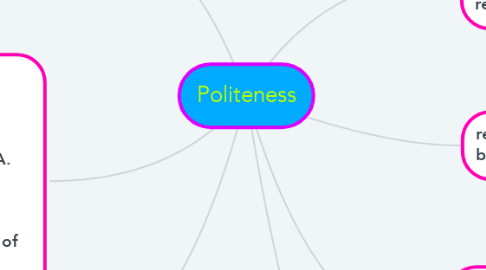Politeness
by Сара Круглова


1. Negative politeness
1.1. concerned with the addressee’s wish to maintain freedom of action and to remain free from imposition while positive politeness is concerned with the addressee’s wish to be appreciated and liked by others.
1.1.1. Impoliteness, then, refers to behaviors that attack positive face (e.g. when you criticize someone) or negative face (e.g. when you make demands on someone).
2. The two types of politeness under discussion are subdivided into a large number of different strategies depending on FTA. The choice of strategies depends on speaker’s ability to correctly assess such factors of communication as Power, Distance and Imposition.
2.1. The labelling of the types of culture as far as cultural differences are concerned is connected with the awareness of these differences as stereotypes.
2.1.1. The knowledge concerning Politeness concept becomes indispensable for the translator because there are a lot of inferential and covert meanings that exist in the cultural contexts of the author (addressant)
3. Etiquette forms of expression. In linguistics etiquette is understood as a system of rules and rituals that regulates social and professional behavior.
3.1. The universal etiquette schema is connected with the knowledge of polite establishing and terminating the contact.
3.1.1. Dimensions of cross-cultural and intercultural differences mostly lie in social norms reflecting the differences In Politeness standard norms
4. There are two basic levels of politeness studies: one level corresponds to various ways in which polite behavior is perceived by people belonging to different socio-cultural groups, and the second level concerns a theory of social behavior and language usage
4.1. in computer-mediated environment special forms of netiquette (netetiquette) appeared to oppose “impolite” strategies of flamings, trollings, hotlinking, spams etc.
5. repertoire of cooperative polite behavioral rules
5.1. These rules are represented by the choice of verbal and nonverbal codes used in the situations of addressing, meetings, greetings, expressing condolences, apologizing, requests and invitations, agreements and disagreements, approvals and disapprovals, and many other functional spheres of socializing.
5.1.1. Positive and attractive selfpresentation, correct word choices reflect both individual and group politeness.
